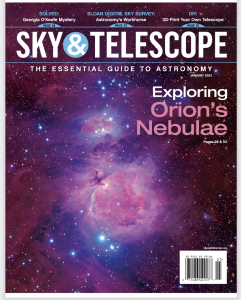
A big star exploded as a supernova in the lovely face-on spiral M101 in Ursa Major this month. At a distance of 20 million light years, this is the closest supernova in five years and the first in this galaxy since 2011. The new supernova isn’t close enough to see with the unaided eye, alas, but it lies within reach of a 5” or larger telescope for visual observers (as of the end of May 2023) and it offers an easy target for imagers. [Read more…] about An Exploding Star in Messier 101
Share This:


